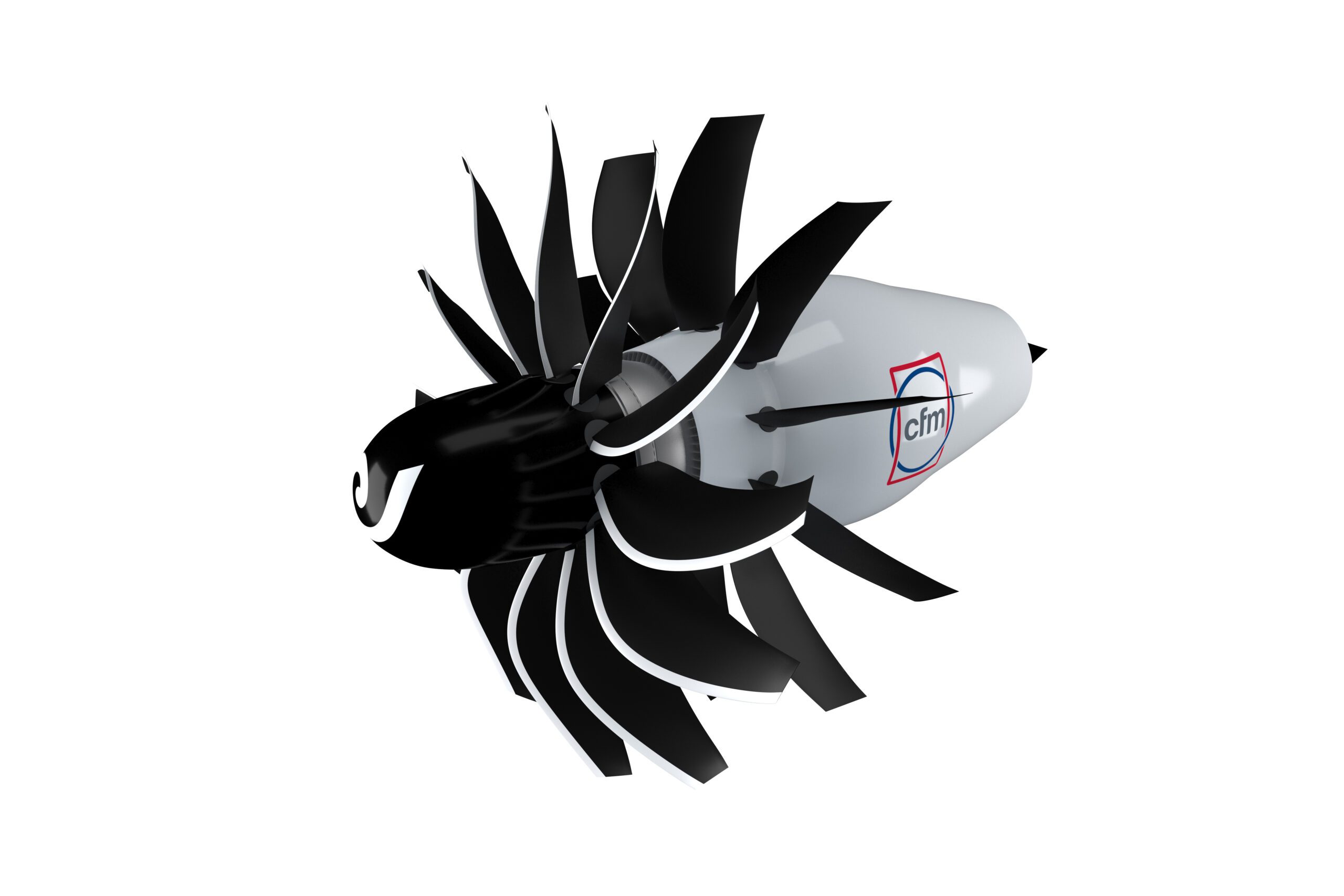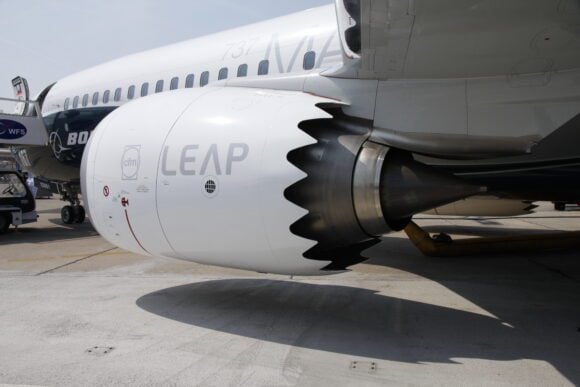
Open Fan architecture Copyright@CFMInternational scaled
The US Department of Transportation has awarded $100 million to the US aerospace industry to develop technologies that reduce aircraft fuel burn, lower emissions, and improve their noise footprint, it announced on September 10. Under the leadership of the FAA’s Continuous Lower Energy, Emissions and Noise (CLEEN) Phase 3 program, participants are required to invest another $100 million themselves. Technology funding benefits RISE engine program.
The CLEEN program exists since 2010, but Phase 3 targets to reduce fuel efficiency hence carbon emissions by 20 percent over ICAO standards, nitrogen oxide emissions by 70 percent, and noise by 25 dB over ICAO Stage 5 guidelines. The program has six participants with Boeing, Pratt & Whitney, General Electric Aviation, Honeywell Aerospace, Rohr, and a combination of Delta Airlines Technical Operations, GKN Aerospace, MDS Coating, and America’s Phenix. Safran Nacelles and Rolls-Royce will also participate with the FAA.
The FAA press release details the different projects that the participants will work on, which we quote here:
“General Electric Aviation will develop an advanced engine propulsion system and advanced acoustic improvements to reduce noise and fuel consumption; electric and hybrid-electric systems to increase fuel efficiency, and advanced combustion and thermal management systems to reduce emissions and fuel consumption. The company also will support the evaluation of alternative jet fuels that could enable further aircraft performance improvements.
Honeywell Aerospace will develop a more efficient engine fan, combustion system, compressor, and turbine to reduce noise, emissions, and fuel consumption.
Pratt & Whitney will develop an ultra-quiet engine fan and an advanced combustion system to reduce noise, emissions, and fuel consumption.
Boeing will develop technologies to reduce noise from the wings, landing gear, and engine inlets. The company also will support the evaluation of alternative jet fuels that could enable further aircraft performance improvements and help to develop new algorithms that enable aircraft to fly quieter, more fuel-efficient routes.
Delta TechOps, GKN Aerospace, MDS Coating, and America’s Phenix will work together to develop erosion-resistant fan blade coatings to reduce fuel consumption over the life of an engine.
Rohr Inc. will develop acoustic technology to reduce the noise from engine exhausts.”
So the focus is predominantly on advanced fan and propulsion technologies that can use traditional or alternative fuels like SAFs, while only GE Aviation is looking at electric and hybrid-electric systems.
Boeing will look at the wings, engine inlets, and landing gear in order to reduce noise. (Richard Schuurman)
Funding will benefit GE’s RISE project
GE Aviation specified that together with the FAA it will invest $55 million in the next five years. “This investment brings us another step closer to introducing open fan, hybrid electric, and new engine core technologies to our customers sooner, improving fuel efficiency and lowering carbon emissions from aviation,” said Arjan Hegeman, general manager of advanced technologies.
The engine maker will look at a number of technologies that have also been selected for the RISE technology program with Safran Engines that was announced in June. Back then, the two companies said that the Revolutionary Innovation for Sustainable Engines program will include 300 seperate development programs and sub-programs. The aim is to launch a new commercial engine that should be available around 2035, preferably based on an open rotor.
CLEEN Phase 3 indeed includes funding to mature and test the open fan architecture. “These studies will leverage previous successful results and new technology to evaluate and mature open fan noise strategies”, says GE.
Another area of research is acoustics to develop new acoustic liners and outlet guide vanes to reduce noise, while advanced thermal management looks at technologies to handle hotter temperatures to reduce fuel burn and improve efficiency. A downside of hotter engines is that NOx emissions increase, so another program will look at a low emission combustor with lower NOX and non-volatile particle emissions.
The hybrid-electric element of Phase 3 is also part of RISE and focuses on an integrated electric power generation system that should give the engine extra power. GE Aviation and Safran said that RISE will be suitable for 100 percent SAF and even hydrogen, which is the final aspect of the Phase 3 program.
Views: 14




